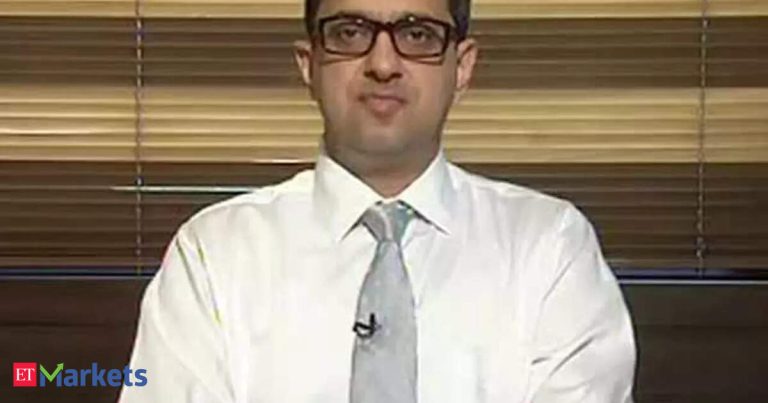In an exclusive conversation with ETMarkets, Kedar Kadam, Director – Equities: Asset & Wealth Management at Dolat Capital Markets, outlines why domestic demand-driven sectors such as FMCG, automobiles, and private banks are poised to outperform in 2025.
He believes falling interest rates, a favourable monsoon, and steady rural consumption will act as key tailwinds, while also highlighting selective opportunities in export-oriented and infrastructure sectors.
Kadam advises investors to adopt a staggered approach amid ongoing global uncertainties and maintain discipline in stock selection. Edited Excerpts –
Q) Thanks for taking the time out. After a stable May, the market turned volatile in June. 1H2025 has been robust with Nifty closing in the red in just 2 out of the last 5 months; however, we still underperformed EM peers in 2025. How do you see markets in the medium-to-long term?
A) Yes, on YTD basis, Indian equities have delivered a modest return of ~5.5% but have underperformed several other emerging markets such as Brazil (~14%), Korea composite (~19%), and Hang Seng (~23%).
This divergence has been driven by relatively more attractive valuations and stronger FII inflows into those markets. In contrast, India’s macro indicators and earnings momentum have softened compared to recent years.
Q4FY25 earnings we’re largely in line and lacked material positive surprises, reinforcing the view that near-term market momentum is subdued.
Amid this backdrop and against a setting of ongoing global uncertainties around geopolitics, trade dynamics, and central bank policy we expect Indian markets to remain range bound with a slight downside bias in the near term.
That said, the medium to long-term structural growth story remains compelling. Stable policy continuity, a gradual recovery in the capex and credit cycles, and favourable demographics provide a strong foundation.
As earnings visibility improves and global risk sentiment stabilizes, Indian markets may see a gradual re-rating. In this environment, selective opportunities continue to exist across sectors such as banking, infrastructure, and domestic cyclicals.
Q) What is your take on the outcome of the MPC meeting in June. What is the trajectory you foresee for rates in 2025?
A) A lot of surprises came in the policy announcements. Overall, RBI policy could be touted as a pro growth in a backdrop of an uncertain global environment.
RBI decided to front load rates (50 bps cut vs. 25 bps est.) and liquidity at the same time (100 bps reduction in the CRR to be fully effective by November 2025).
Higher than expected rate cuts and front loading of liquidity would be positive for India equities, sectors like discretionary consumption, NBFC, real estate should benefit.
With the shift in stance back to neutral from accommodative, we believe MPC has done all the heavy lifting to revive demand to aspirational levels and now would be a good time when the MPC would want to evaluate external situation and domestic growth and inflation equations for the next few months before taking the next rate action. We expect MPC to pause for the next couple of policy meetings.
Q) Which themes look attractive to you for the next 6-12 months amid trade war fears, strong dollar and possible scenario of falling interest rates?
A) In our view, domestic demand driven sectors such as FMCG, autos, and private banks are well-positioned to benefit from resilient rural consumption and lower borrowing costs, especially with a favourable monsoon.
The rate sensitive sectors like real estate and financials may gain further traction if interest rates decline, boosting loan growth and housing demand. Besides these export-oriented sectors such as IT and pharmaceuticals offer natural hedges against a strong dollar, thanks to their significant USD denominated revenues.
At the same time, infrastructure and capital goods companies could benefit from continued public and private investment, regardless of global volatility.
Q) The IMD has predicted a normal monsoon in 2025 – do you see this supporting consumption stocks/auto stocks?
A) An early and favourable monsoon, as predicted by the IMD, could have broad positive implications for agriculture-linked sectors. Historically, such conditions have supported higher rural demand and improved performance in areas like agrochemicals, FMCG, and automobiles.
A normal monsoon in 2025 is likely to benefit consumption and auto stocks with significant rural exposure. Improved agricultural output typically boosts rural incomes, driving demand for essentials and discretionary goods, especially FMCG products and two-wheelers/ tractors.
Additionally, lower food inflation may further enhance consumer sentiment and support overall spending.
Q) How do you see flows – FIIs have recently turned positive on Indian markets, while DIIs have supported the rally. Do you see a reversal of flows into Indian markets?
A) FIIs turning net positive in recent months (Apr & May) is a constructive development following sustained outflows earlier this year. Going forward, sustained FII inflows will depend on global interest rate trends, the strength of the U.S. dollar, and geopolitical developments.
If central banks particularly the US Fed signal easing, emerging market flows, including to India, could strengthen further. India’s long-term growth story, political stability, and improving earnings visibility continue to attract global investors.
While near-term flows may remain volatile amid external uncertainties, strong DII support and rising retail participation will help cushion the market.
Overall, despite short-term fluctuations, the trend in foreign flows appears to be gradually turning positive for India.
Q) Is there any theme or sector where one should avoid fresh investments in the current environment?
A) While completely avoiding a sector may not always be necessary, stock selection and valuation discipline remain paramount. In the current environment, it’s prudent to stay underweight in sectors with weak earnings visibility, stretched valuations, or excessive speculative interest.
A cautious approach in such areas can help manage downside risk while maintaining focus on fundamentally strong, long-term opportunities.
Q) Have you seen the recent trend of block deals taking place? Is that largely promoter selling? If yes, is that a worrying sign for stocks or is it business as usual?
A) Yes, there’s been a notable rise in block deals lately, with over ₹43,000 crore worth of promoter and insider selling in May-25 alone.
While that number is significant, most of these sales appear to be strategic in nature aimed at improving free float or monetizing stakes, as seen in recent deals involving a few large companies.
Importantly, these blocks are being absorbed by institutional investors, indicating a strong market appetite.
Unless such selling is repeated without clear rationale or involves companies with weak fundamentals, this trend looks like business as usual, not a red flag.
Q) What is your call on the small & midcap space? Are they still trading at expensive valuations, and are large caps still a better play?
A) The strong rally in mid and small caps has pushed valuations higher, making stock selection increasingly important. While some quality names still offer value, others seem to have run ahead of fundamentals.
In contrast, large caps, particularly in sectors like BFSI, IT and industrials, look more reasonably valued and offer better downside protection.
A balanced approach is advisable, with a slight near-term preference for large caps and a focus on companies with solid fundamentals and earnings visibility.
Q) Many investors who stayed on the sidelines in the beginning of 2025 and are now experiencing FOMO as markets have seen a significant rally, but it is still down by about 5% from highs. Should they adopt staggered buying, keep cash or do a lump sum investment?
A) While markets have rebounded strongly, they’re still about 5% below all-time highs, and the overall environment remains volatile and data dependent.
In this context, a staggered buying approach (SIP or phased allocation) makes the most sense. This strategy allows investors to average into the market, manage short-term volatility, and avoid the risk of poor timing with a lump sum.
Keeping some cash on hand for tactical opportunities is also wise, especially given upcoming global cues and event risks. We believe CY2025 will be a year of accumulation and volatility.
Q) COVID cases are rising. Can this fuel hospital stocks, or should investors keep an eye on that theme? What are your views?
A) Yes, there has been a rise in COVID cases, prompting precautionary measures from the Health Ministry, including directives to ensure oxygen and bed availability.
However, most cases so far remain mild and manageable at home. From an investment standpoint, while short-term sentiment may support hospital and diagnostic stocks, we believe the situation is largely under control, and we don’t see a major structural shift purely on COVID grounds.
That said, we remain constructive on the broader Healthcare space given its long-term growth drivers like rising health awareness, insurance penetration, and increased spending on medical infrastructure.
So, while investors can keep an eye on the COVID-related theme, the focus should ideally remain on well-run companies with strong fundamentals and diversified revenue streams.
(Disclaimer: Recommendations, suggestions, views, and opinions given by experts are their own. These do not represent the views of the Economic Times)







